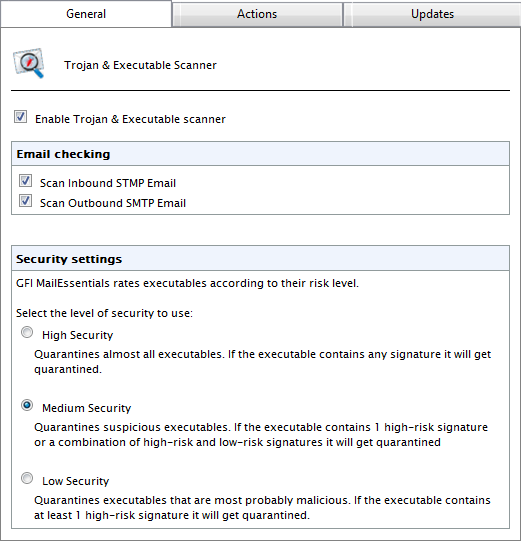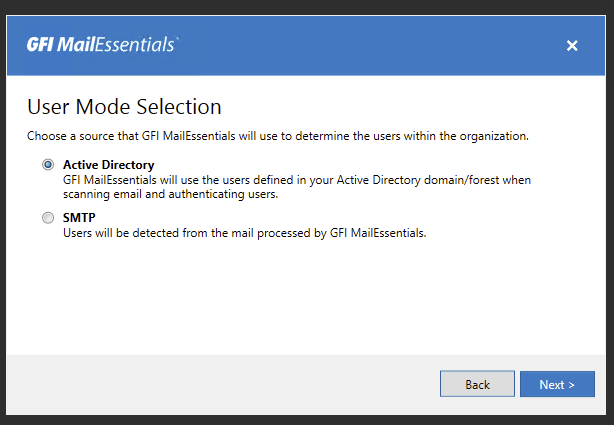

Once the files are removed, MailEssentials will auto-update the definitions. \GFI\MailEssentials\AntiSpam\AUAntiPhish2 folder, and delete the following files: GFI MailEssentials Quarantine Action Services.Open the Windows Services Manager by navigating to Start > Run > services.msc and stop the following services: The MailEssentials services need to be stopped.

Please make sure you follow the steps in the Recommended Anti-virus and Backup Exclusions article to minimize the risk of corruption. Local backup solutions may access update files or folders and thus corrupt the update process. Updates may fail if the local antivirus marks the downloaded files as malware. If definitions are old but updates don't fail, disable caching on the proxy server for the GFI MailEssentials server or exclude the domain. Make sure that the credentials supplied to the proxy configuration are correct, as described in the GFI MailEssentials updates are failing when using a proxy article. Make sure that are no conflicts and that the local firewall solution is not preventing communication through the ports as defined in the GFI MailEssentials Port Description article. GFI MailEssentials communicates through a variety of ports. ICMP is usually disabled on CDNs, so ping may not be a reliable tool to use in testing. You can use the nslookup tool to make sure that the domains are reachable. Refer to the Configuring Proxy Settings article for more information. For more information refer to Spam Actions - What to do with spam emails.GFI MailEssentials can also be configured to download updates through a proxy server. If importing settings to a different environment (for example, on an IIS Server), these actions will not work.

This is possible for example, DNS settings, domains list and perimeter servers are different from the server from which settings were exported. Some imported settings may not be appropriate for the installation of GFI MailEssentials may need to be re-configured.


 0 kommentar(er)
0 kommentar(er)
